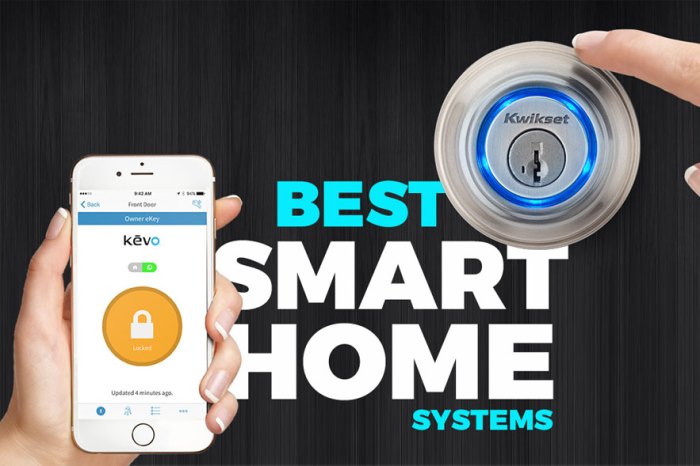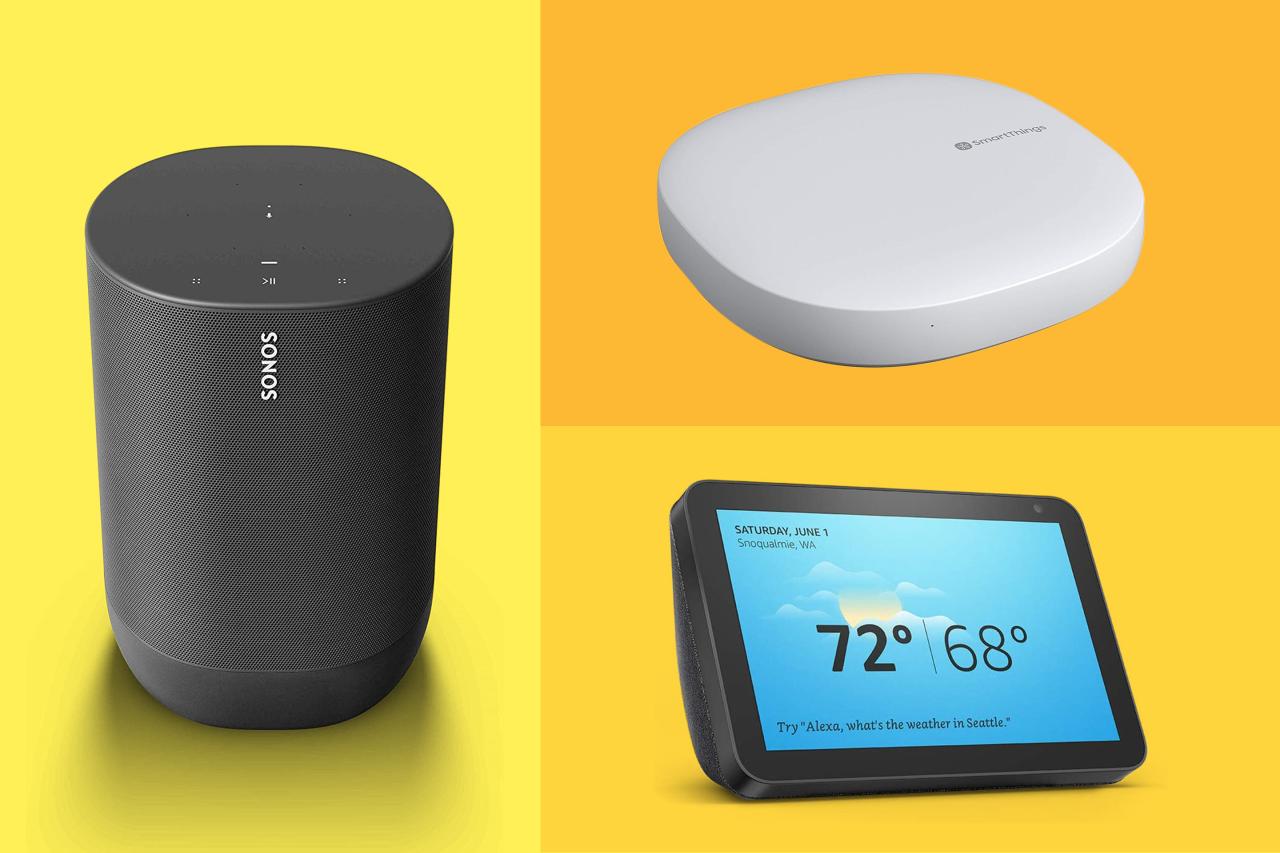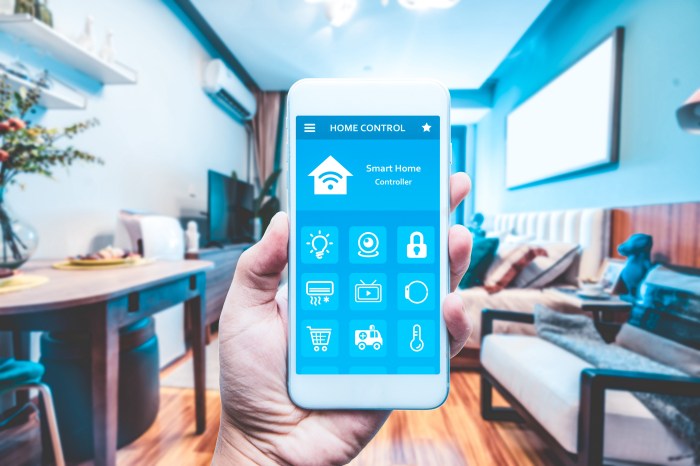In an era where technology seamlessly blends with our daily lives, smart home systems have emerged as a revolutionary force, transforming our living spaces into intelligent and responsive environments. These systems offer a symphony of convenience, security, and energy efficiency, making them a coveted addition to modern homes.
As the smart home market continues to flourish, navigating the vast array of brands can be a daunting task. This comprehensive guide delves into the world of smart home systems, unveiling the best brands that will elevate your living experience to new heights.
As we embark on this journey, we will explore the key considerations for choosing a smart home system brand, delving into factors such as compatibility, reliability, security, and ease of use. We will unveil the top smart home system brands, showcasing their key features, advantages, and potential drawbacks.
Furthermore, we will delve into the process of installing and integrating a smart home system, providing step-by-step guidance to ensure optimal performance. Additionally, we will address common issues that may arise and offer troubleshooting tips to resolve them effectively.
Introduction

Smart home systems are rapidly transforming the way we live, offering convenience, comfort, and enhanced security. These integrated systems connect devices and appliances in your home, allowing you to control and monitor them remotely.
The popularity of smart home technology has surged in recent years, driven by advancements in IoT (Internet of Things) devices, improved connectivity, and increasing awareness of its benefits.
Benefits of Smart Home Systems
- Convenience: Smart home systems enable you to control devices and appliances with your voice, smartphone, or tablet, providing easy access and automation.
- Energy Efficiency: These systems can optimize energy usage by automatically adjusting thermostats, lights, and appliances, leading to reduced energy consumption and cost savings.
- Enhanced Security: Smart home systems offer increased security through motion sensors, security cameras, and smart locks, allowing you to monitor your home and deter potential intruders.
- Personalization: Smart home systems can be customized to your preferences, creating a personalized living environment that suits your lifestyle and needs.
Key Considerations for Choosing a Smart Home System Brand

Selecting the right smart home system brand is crucial to ensure a seamless and enjoyable experience. Here are some key factors to consider: Compatibility:
- Check if the brand’s products are compatible with your existing devices and platforms. Consider brands that offer open ecosystems, allowing integration with a wide range of devices.
- Consider brands that provide dedicated apps for controlling and managing your smart home devices.
Reliability:
- Look for brands with a reputation for reliability and stability. Read reviews and customer feedback to assess the brand’s track record in delivering high-quality products.
- Choose brands that offer comprehensive warranties and support services to ensure peace of mind.
Security:
- Prioritize brands that prioritize security and data protection. Look for brands that employ robust encryption methods and security protocols to safeguard your personal information and privacy.
- Consider brands that offer regular security updates and patches to address potential vulnerabilities.
Ease of Use:
- Opt for brands that offer user-friendly interfaces and intuitive control systems. Consider brands that provide clear and comprehensive documentation, tutorials, and customer support to help you set up and manage your smart home system.
- Look for brands that offer voice control integration, allowing you to control your smart devices using voice commands.
Important Features to Look for in a Smart Home System:
Remote Access
Choose brands that offer remote access capabilities, allowing you to control your smart home devices from anywhere with an internet connection.
Consider brands that provide mobile apps for remote control and monitoring.
Scheduling and Automation
Look for brands that offer scheduling and automation features, allowing you to set routines and schedules for your smart devices.
Consider brands that provide customizable automation rules and scenarios to suit your lifestyle and preferences.
Energy Efficiency
Choose brands that offer energy-efficient smart devices, helping you save energy and reduce your carbon footprint.
Consider brands that provide real-time energy monitoring and analytics to help you track and optimize your energy usage.
Interoperability
Opt for brands that offer interoperability with popular smart home platforms and ecosystems.
Consider brands that provide open APIs and developer tools, allowing you to integrate your smart home system with other devices and services.
Top Smart Home System Brands

When selecting a smart home system brand, it’s crucial to consider factors such as compatibility, reliability, ease of use, and customer support. This table presents an overview of some of the leading smart home system brands, highlighting their key features, advantages, and disadvantages:
| Brand Name | Key Features | Pros | Cons |
|---|---|---|---|
| Google Nest | – Voice control with Google Assistant
|
– Reliable and stable performance
|
– Can be expensive
|
| Amazon Alexa | – Voice control with Alexa
|
– Reliable and stable performance
|
– Can be expensive
|
| Apple HomeKit | – Voice control with Siri
|
– Reliable and stable performance
|
– Limited compatibility with non-Apple devices
|
| Samsung SmartThings | – Voice control with Bixby
|
– Reliable and stable performance
|
– Limited compatibility with non-Samsung devices
|
| Hubitat Elevation | – Local control without cloud dependency
|
– Reliable and stable performance
|
– Can be complex to set up and use
|
These are just a few of the many smart home system brands available. When choosing a brand, it’s important to consider your specific needs and preferences, as well as the compatibility of the system with your existing devices and services.
Comparison of Smart Home System Brands
Various smart home system brands offer distinct features, pricing structures, and compatibility levels. Understanding these differences is essential for making an informed decision when selecting a smart home system. This section delves into a detailed comparison of the top smart home system brands, highlighting their similarities and differences in terms of features, pricing, and compatibility.
Features
Smart home system brands vary in the features they offer. Some common features include:
- Smart lighting: Control lights remotely, set schedules, and adjust brightness.
- Smart thermostats: Regulate temperature, set schedules, and monitor energy usage.
- Smart door locks: Lock and unlock doors remotely, grant access to guests, and receive notifications when doors are opened or closed.
- Smart security systems: Monitor homes for intruders, send alerts, and allow remote access to security cameras.
- Smart speakers: Play music, control smart devices, and access information through voice commands.
The specific features offered by each brand may vary, so it’s important to compare brands based on the features that are most important to you.
Pricing
Smart home system brands also vary in pricing. Some brands offer affordable starter kits, while others may have higher upfront costs but provide more advanced features and functionality. It’s important to consider your budget when selecting a smart home system brand.
Compatibility
Compatibility is another important factor to consider when choosing a smart home system brand. Some brands are compatible with a wide range of smart devices, while others may only be compatible with a limited number of devices. It’s important to make sure that the smart home system brand you choose is compatible with the devices you already have or plan to purchase.
Strengths and Weaknesses
Each smart home system brand has its own strengths and weaknesses. Here’s a brief overview of the strengths and weaknesses of some of the top brands:
- Google Nest: Strengths: User-friendly interface, wide range of compatible devices, strong integration with Google services. Weaknesses: Limited customization options, higher price point.
- Amazon Alexa: Strengths: Wide range of compatible devices, strong voice control capabilities, integration with Amazon services. Weaknesses: Less user-friendly interface, potential privacy concerns.
- Apple HomeKit: Strengths: Strong security features, seamless integration with Apple devices. Weaknesses: Limited range of compatible devices, higher price point.
- Samsung SmartThings: Strengths: Wide range of compatible devices, open platform, strong integration with Samsung devices. Weaknesses: Complex setup process, less user-friendly interface.
Smart Home System Installation and Integration

Installing and integrating a smart home system involves several steps to ensure optimal performance and functionality. Proper installation and integration are crucial for a seamless and reliable smart home experience.
Initial Planning and Assessment
Before embarking on the installation process, it’s essential to plan and assess your smart home needs and requirements. Consider the following factors:
- Define the scope of your smart home system: Identify the specific areas and devices you want to automate, such as lighting, heating/cooling, security, and entertainment.
- Choose a compatible smart home platform: Select a platform that supports the devices and features you desire. Popular options include Amazon Alexa, Google Home, Apple HomeKit, and Samsung SmartThings.
- Evaluate your existing home infrastructure: Assess your electrical wiring, Wi-Fi coverage, and internet connectivity to ensure compatibility with smart home devices.
Installation Process
Once you have a clear plan and assessment, you can proceed with the installation process:
- Prepare the installation area: Ensure the designated areas for smart devices are ready for installation. This may involve mounting brackets, running wires, or upgrading electrical outlets.
- Install smart home devices: Follow the manufacturer’s instructions to install each smart device properly. This typically involves connecting the device to power, pairing it with your smart home platform, and configuring its settings.
- Connect devices to the smart home platform: Use the appropriate app or software to connect each smart device to your chosen smart home platform. This allows the devices to communicate with each other and be controlled centrally.
- Configure and personalize settings: Customize the settings of each smart device to suit your preferences and requirements. This includes setting schedules, routines, and automations.
- Test and troubleshoot: Once everything is installed and configured, test the functionality of each smart device and ensure it’s working properly. Troubleshoot any issues that arise by checking connections, updating firmware, or seeking support from the manufacturer.
Importance of Proper Installation and Integration
Proper installation and integration are vital for the optimal performance and reliability of your smart home system:
- Ensures seamless operation: A well-installed and integrated system ensures that all smart devices communicate smoothly and perform their intended functions without glitches or disruptions.
- Maximizes energy efficiency: Proper integration allows for efficient energy management by optimizing heating, cooling, and lighting systems based on your preferences and usage patterns.
- Enhances security and privacy: A properly installed and integrated smart home system can provide enhanced security features, such as motion detection, access control, and remote monitoring, while maintaining privacy and data protection.
- Improves convenience and accessibility: A well-integrated smart home system offers convenient control and accessibility of devices and features through voice commands, mobile apps, and touch screens, making it easy to manage your home from anywhere.
Troubleshooting Common Smart Home System Issues
Smart home systems can revolutionize daily life, but they are not immune to occasional issues. Common problems include connectivity issues, device malfunctions, and software glitches. Troubleshooting these issues promptly ensures a seamless smart home experience.
Regular maintenance and updates are crucial in preventing problems. This includes updating firmware, checking for system compatibility, and performing routine maintenance tasks. By being proactive, you can minimize the likelihood of encountering issues and keep your smart home system running smoothly.
Identifying Common Smart Home System Issues
Common issues with smart home systems include:
- Connectivity problems: Devices may struggle to connect to the network, resulting in intermittent or no response.
- Device malfunctions: Smart devices may malfunction due to hardware issues, software bugs, or compatibility problems.
- Software glitches: Software updates can introduce bugs or glitches that affect the system’s performance or functionality.
- Security vulnerabilities: Smart home systems may have security vulnerabilities that can be exploited by unauthorized individuals.
- Compatibility issues: Different smart home devices may not be compatible with each other, leading to connectivity or functionality problems.
Troubleshooting Tips and Solutions
To troubleshoot common smart home system issues:
- Check the network connection: Ensure that all smart devices have a strong and stable internet connection. Restart the router or modem if necessary.
- Restart devices: Sometimes, simply restarting a malfunctioning device can resolve the issue. Unplug the device, wait a few minutes, and then plug it back in.
- Update firmware: Check for firmware updates for smart devices and the system hub. Updates often address bugs and improve performance.
- Check compatibility: Ensure that all smart devices are compatible with each other and the system hub. Refer to the manufacturer’s documentation for compatibility information.
- Secure the system: Implement strong security measures, such as using strong passwords and enabling two-factor authentication, to protect the system from unauthorized access.
Importance of Regular Maintenance and Updates
Regular maintenance and updates are essential for preventing smart home system issues. This includes:
- Updating firmware: Regularly check for and install firmware updates for smart devices and the system hub. Updates often address bugs, improve performance, and enhance security.
- Checking system compatibility: Ensure that all smart devices are compatible with each other and the system hub. Check for compatibility issues before adding new devices to the system.
- Performing routine maintenance: Regularly clean smart devices and sensors to ensure proper operation. Check batteries and replace them when necessary.
Future of Smart Home Systems
The future of smart home systems is poised to witness a surge of innovation and advancements, revolutionizing the way we interact with our homes. With the rapid pace of technological progress, we can expect a host of new technologies and trends to shape the landscape of smart home automation.
One key trend driving the evolution of smart home systems is the integration of artificial intelligence (AI) and machine learning (ML). These technologies empower smart home systems with the ability to learn from user behavior, anticipate needs, and make intelligent decisions, creating a more personalized and intuitive home experience.
Enhanced Connectivity and Interoperability
The future of smart home systems will see a heightened focus on enhancing connectivity and interoperability among devices and platforms. This will enable seamless communication and collaboration between various smart devices, regardless of their manufacturer or technology. As a result, users can expect a more cohesive and unified smart home experience, with devices working together harmoniously to automate tasks and create a truly intelligent living space.
Increased Focus on Energy Efficiency and Sustainability
Smart home systems are poised to play a pivotal role in promoting energy efficiency and sustainability. By leveraging advanced algorithms and data analysis, these systems can optimize energy consumption, reduce carbon footprint, and create a more eco-friendly home environment. This trend aligns with the growing global emphasis on sustainability and the need to reduce our impact on the environment.
Integration of Voice Control and Gesture Recognition
The future of smart home systems will witness the widespread adoption of voice control and gesture recognition technologies. These intuitive interfaces allow users to interact with their smart devices and control their home environment using natural language commands and hand gestures.
This hands-free approach enhances convenience and accessibility, making smart home systems more user-friendly and accessible to a broader audience.
Enhanced Security and Privacy Features
As smart home systems become more prevalent, ensuring robust security and privacy measures is of paramount importance. The future of smart home systems will see advancements in encryption technologies, multi-factor authentication, and intrusion detection systems. These features will safeguard user data and protect against unauthorized access, providing peace of mind and ensuring the integrity of the smart home ecosystem.
Integration of Smart Home Systems with Smart Cities
The future of smart home systems holds the promise of integration with smart city initiatives. This convergence will enable smart homes to communicate with urban infrastructure, allowing for enhanced energy management, traffic optimization, and improved public services. By leveraging data from smart homes, cities can gain valuable insights to make informed decisions, optimize resource allocation, and create a more sustainable and efficient urban environment.
Final Thoughts

As we conclude our exploration of the best smart home system brands, it is evident that the future of smart home technology holds immense promise. Emerging technologies, such as artificial intelligence and voice control, are poised to revolutionize the way we interact with our homes.
As these technologies continue to evolve, smart home systems will become even more sophisticated, intuitive, and seamlessly integrated into our lives. The potential impact of these advancements on the smart home industry is boundless, and we can eagerly anticipate the transformative experiences they will bring.
FAQ Summary
Q: How do I choose the best smart home system brand for my needs?
A: Consider factors such as compatibility with your existing devices, reliability, security features, ease of use, and customer support when selecting a smart home system brand.
Q: Which smart home system brand offers the most comprehensive range of features?
A: Brands like Google Nest, Amazon Alexa, and Apple HomeKit offer a wide array of features, including voice control, smart lighting, thermostats, security cameras, and more.
Q: How can I ensure a smooth installation and integration of my smart home system?
A: Proper planning, careful reading of instructions, and testing each component thoroughly are crucial for a successful installation and integration process.
Q: What are some common issues that may arise with smart home systems, and how can I troubleshoot them?
A: Common issues include connectivity problems, device malfunctions, and software updates. Troubleshooting steps may involve restarting devices, checking internet connection, updating firmware, and contacting customer support.